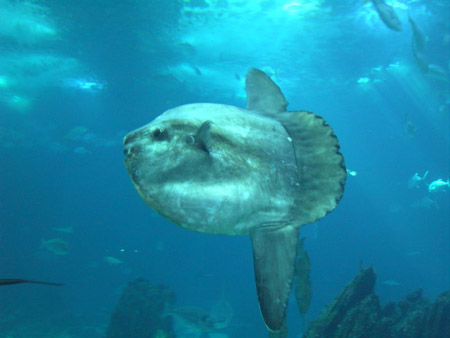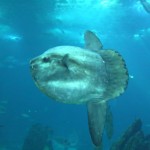Ocean Sunfish Facts
Scientific Classification of Ocean Sunfish: Mola Mola
Kingdom of Ocean Sunfish: Animalia
Phylum of Ocean Sunfish: Chordata
Class of Ocean Sunfish: Actinopterygii
Order of Ocean Sunfish: Tetraodontiformes
Family of Ocean Sunfish: Molidae
Genus of Ocean Sunfish: Mola
Species of Ocean Sunfish: M. mola
Ocean Sunfish
The Ocean sunfish come to humans as peculiar looking species. The sunfish are possibly the heaviest and the largest of bony fish. These species are not used for commercial trade but however are in huge demand for live oil and meat.
Pictures of Ocean Sunfish
Take a look at the beautiful pictures of these species.
Some Interesting Facts about Ocean Sunfish
We detail a few more unique and noteworthy facts about these fishes:
- The brain size is as small as a nut despite their huge built.
- When dead, they are found lying ocean surfaces.
- These species are difficult to train and hence there are very few aquariums that house this fish.
- Whenever they sense a possibility of attack or attacked, these species tend to change their body color.
- These species have parasitic load on the skin. One can spot about 40 unique types of parasites on their body.
- The name of these species Mola signifies millstone. This is a dark colored stone with a peculiar shape. These fishes attract a lot of tourists on the coast of Bali.
Distribution of Ocean Sunfish
Ocean sunfish can be popularly found in the temperate and the tropical parts of the world except colder regions exclusive of parts of British Columbia and Alaska. They are more noticeable in the southern regions barring Antarctica. They are also found in certain parts of Arabian Sea and Mediterranean Sea.
Characteristics of Ocean Sunfish
Weight of Ocean Sunfish: The weight of these species is generally 100 kg but can vary up to 2000 pounds.
Body of Ocean Sunfish: The sunfish are mostly round with a flattish body covered with a leathery, thin skin without much scales
Color of Ocean Sunfish: These fishes can be found in varied colors like olive brown, grey, and black with tinge of silver. They are often found dotted with spots.
Fins of Ocean Sunfish: These species have anal and dorsal fins. The pectoral fins are small and fan shaped while the caudal fins are almost absent replaced by round clavus.The tails of these species are short and wavy. They do not have any swim bladder.
Behavior of Ocean Sunfish
- Despite being a large fish, the ocean sunfish is less harmful to human beings.
- They desire to swim on the surface of the ocean and can be often seen flapping their dorsal fins to draw attention of the sea gulls. This also helps them to get rid of the outer parasite from their body.
- These species prefer to saunter in small clans.
Food Habits of Ocean Sunfish
These species mostly remain active during nighttime. They like to feed on various types of aquatic creatures like the jellyfish, fish larvae, algae, crustaceans, salps, squids, plankton and other likes.
Predators of Ocean Sunfish
The main predators of these species are the majorly large fishes including white sharks, large sharks, killer whales and sea lions. The juvenile ones are usually preyed by fishes like Mahi Mahi and Bluefin Tuna.
Mating Of Ocean Sunfish
The mating season of these species is not clearly known to mankind. They are usually found mating in the tropical and sub tropical waters of the ocean.
The female counterparts usually lay huge number of eggs that may count about 3 million at times. These eggs are externally fertilized. The larva of these species looks like a small fish and they develop long pectoral shaped fins. It is only during nighttime that they come out on the surface of the ocean while in the day time they tend to stay in the depths of the ocean.
Life Span of Ocean Sunfish
The average life span of these species is not yet known. However if tamed they can live for 8 – 10 years.
Conservation Status of Ocean Sunfish
In the category of finned fish, these species are in the list of less important ones in the endangered list. The IUCN has not yet rated it.




